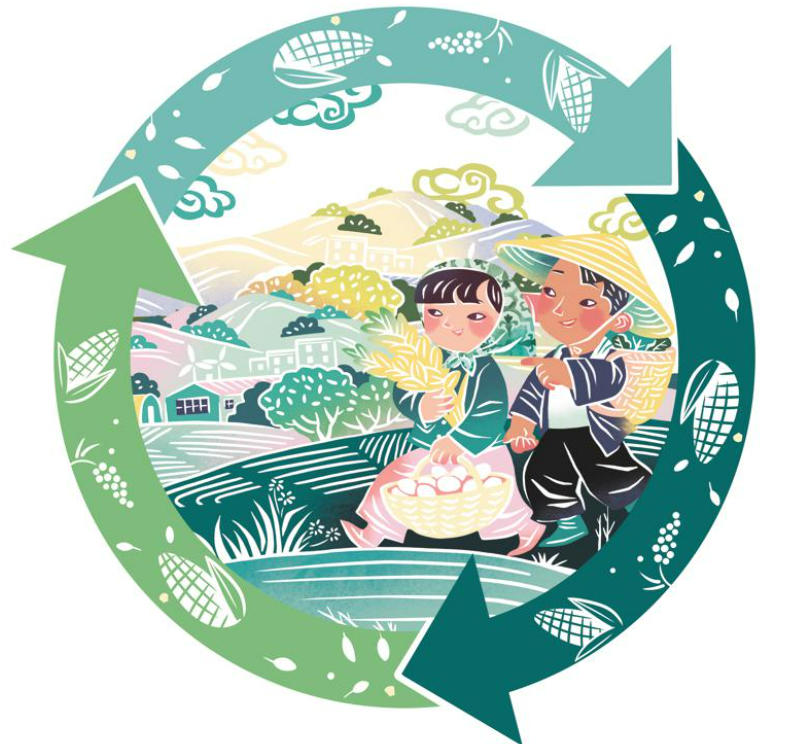一、促进会的会员由团体会员和个人会员组成。
二、申请加入本会的会员须具备如下条件:
1. 拥护本团体的章程;
2. 有加入本团体的意愿;
3. 在本团体的业务(行业、学科)领域内具有一定的影响;
4. 有良好的诚信、契约与合作精神;
5. 愿意为产业的健康发展贡献力量,并承担更多社会任。
三、会员入会的程序是:
1. 提交入会申请书;
2. 经理事会讨论通过;
3. 理事会闭会期间,经常务理事会讨论通过;
4. 由理事会或理事会授权机构发给会员证。
四、会员享有下列权利:
1. 本团体的选举权、被选举权和表决权;
2. 参加本团体的活动;
3. 获得本团体服务的优先权;
4. 对本团体工作的批评建议权和监督权;
5. 入会自愿,退会自由。
五、会员履行下列义务:
1. 遵守本团体的决议;
2. 维护本团体的合法权益;
3. 完成本团体交办的工作;
4. 按规定交纳会费;
5. 向本团体反映情况,提供有关资料。
六、会员退会应书面通知本团体,并交回会员证。会员如1年不交纳会费或不参加本会活动的,视为自动退会。
七、会员如有严重违反本章程的行为,经理事会或常务理事会表决通过,予以除名。
八、个人会员仅限本会邀请。


China has 18 percent of the world's population, but less than 9 percent of the world's cropland and only one-third of the global average availability of freshwater on a per capita basis. But despite these severe resource constraints, China has made remarkable progress in agriculture. For example, between 1949 and 2020, China's total grain production increased six-fold and per capita grain availability more than doubled.
More importantly, China is the world's largest agricultural producer and has a self-sufficiency rate in the production of key staples such as rice and wheat of more than 95 percent.
Yet China faces serious challenges on the agriculture front. Years of intensive farming have damaged the agro-ecosystems that play a critical role in China's food systems. About 40 percent of China's arable land has been degraded and more than 20 percent is contaminated by high levels of heavy metals such as cadmium, copper, lead and zinc.
Over-use of fertilizers and pesticides has contributed to soil degradation, and agriculture is now the largest source of water pollution in the country. Organic matter levels in the rich black soils of Northeast China have declined by more than 75 percent since the 1950s and are estimated to be dropping by 1-2 millimeters per year.
Moreover, climate change is straining China's agricultural production systems, as the severe drought this year amply illustrates.
In order to ensure the country's food security in the coming decades and protect the natural resource base upon which farming depends, a shift toward sustainable and regenerative agriculture is imperative. Sustainable agriculture is already a familiar concept in China, whereas regenerative agriculture is a more recent concept that is gaining increasing currency around the world and is being championed by farmers, academics and corporations alike.
Regenerative agriculture goes a step beyond sustainable agriculture in that it is aimed at regenerating degraded soils and other resources. It is commonly associated with practices such as no till/minimum tillage, cover crops, diverse crop rotations, reduction of agrochemical inputs and well-managed grazing, although the specific practices followed vary from place to place, depending on the ecological and socioeconomic conditions of a particular area.
But how can we promote sustainable and regenerative agriculture across China?
One of the best ways to do so is to repurpose agricultural support. China has already made significant progress in this area, such as through the reform of fertilizer policies, the subsidies for returning straw to the land to augment soil with organic matter, and measures to promote the use of organic manures, recycling of agricultural wastes and the use of low-toxicity bio-pesticides.
Yet more can be done by repurposing agricultural support to promote sustainable and regenerative practices-such as incentivizing the use of cover crops, minimum tillage, diverse crop rotations and the integration of animal and arable production-which can foster a circularity of nutrients and reduce pollution from animal wastes.
Also, ecological compensation policies for agriculture need to be integrated into current ecological compensation regulations. Provinces such as Zhejiang and Jiangsu are already experimenting with this.
China has a large network of demonstration farms, including some ecological farms, which provide an excellent opportunity to test and adopt regenerative approaches in these farms. But for that, more resources need to be devoted to research on this topic, as most of the agricultural research funding both internationally and in China currently goes to research in conventional agriculture. For instance, more research is needed on how to maintain, and increase, productivity as farming systems transition to more sustainable and regenerative practices.
At the same time, reliable metrics are needed for assessing the outcomes of sustainable and regenerative practices. For example, the Global Farm Metric developed by the Sustainable Food Trust can be adapted to the Chinese context.
Lastly, financial mechanisms are crucial for incentivizing the adoption of sustainable and regenerative agriculture, for which both public sector and private sector finance will be required. Carbon markets are one powerful mechanism that could be used to reward Chinese farmers for their contributions to reducing greenhouse gas emissions and sequestering carbon. Other potential sources of finance include insurance companies, retail and commercial banks, credit unions, private equity, philanthropies and sovereign wealth funds.
Food security is a top concern for the Chinese government, even more so now given the pressure on global food supplies. Restoring the health of the soil in China is critical to ensuring food security. Sustainable and regenerative agriculture is indispensable to both soil health and food security. With wider up-scaling and investment, China can become a global leader in the field of sustainable and regenerative agriculture, just as it already is for renewable energy.
Shenggen Fan is a professor at, and dean of, the Academy of Global Food Economics and Policy, China Agricultural University, and Seth Cook is China-India Project Manager, Food and Land Use Coalition.The views don't necessarily reflect those of China Daily.
Address:Room 413, Institute of Quality Standard and Testing Technology for Agro-products of CAAS, No.12 Zhongguancun South Street, Haidian District, Beijing.
Tel:010-82106320 Emil:capiac@capiac.org.cn Website: www.capiac.org.cn
©2022 China Association for the Promotion of Internation 京ICP备19036789号-2
Support:OMOOO
